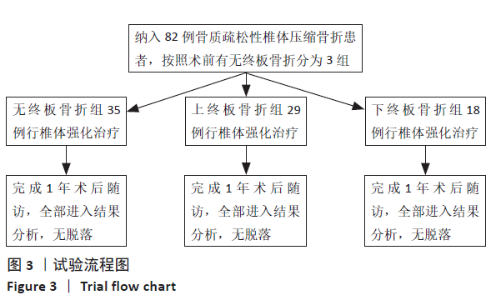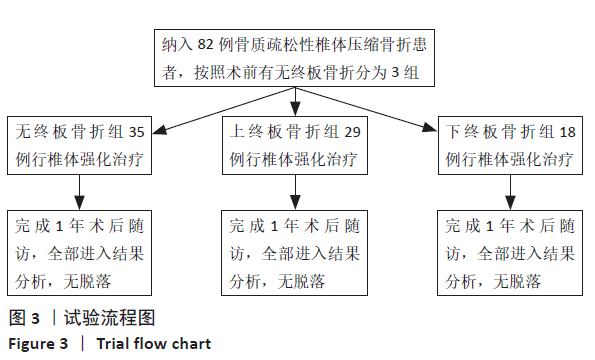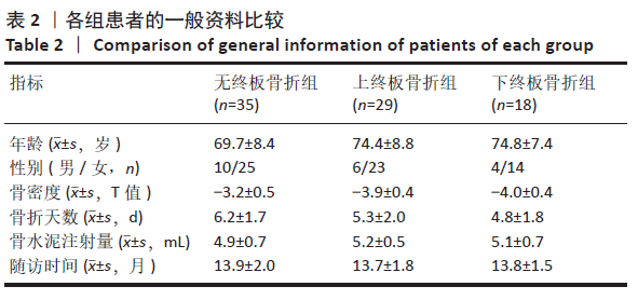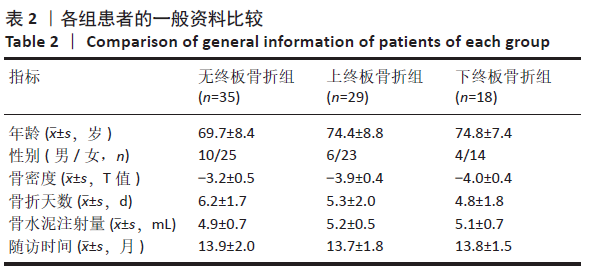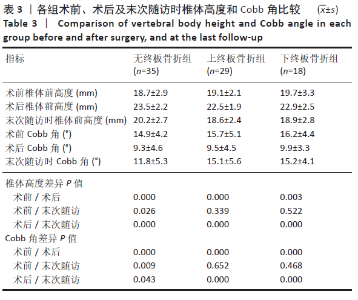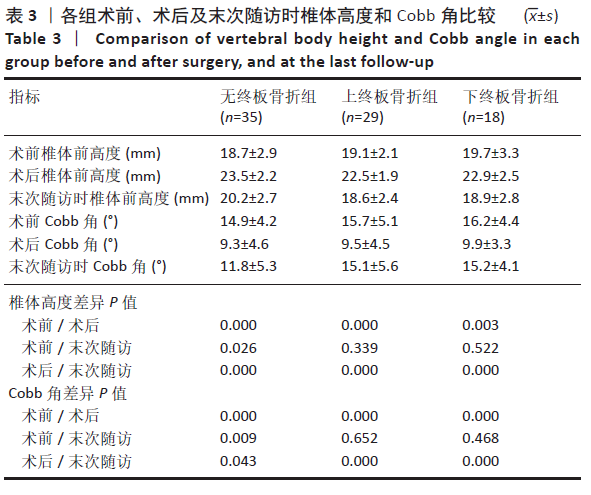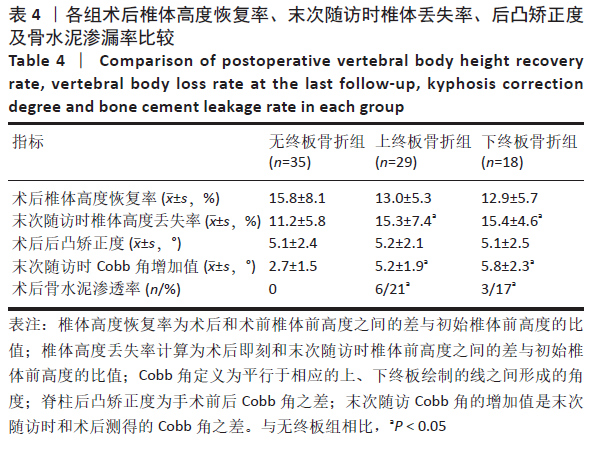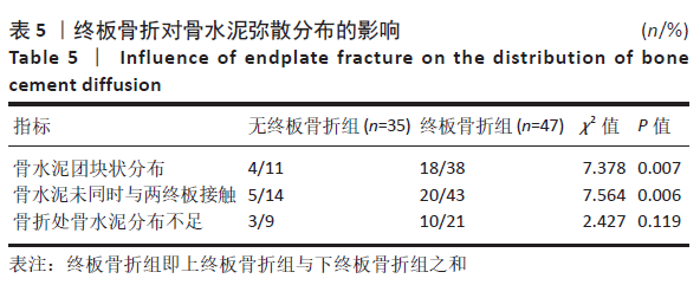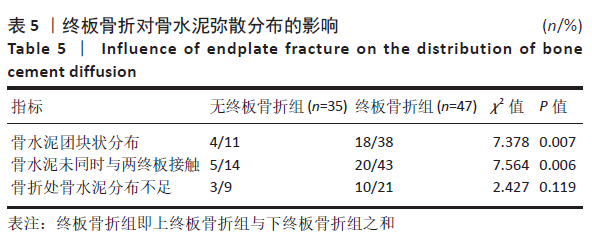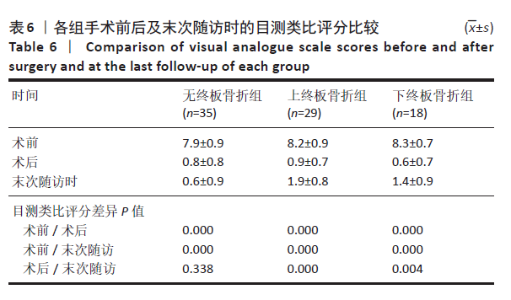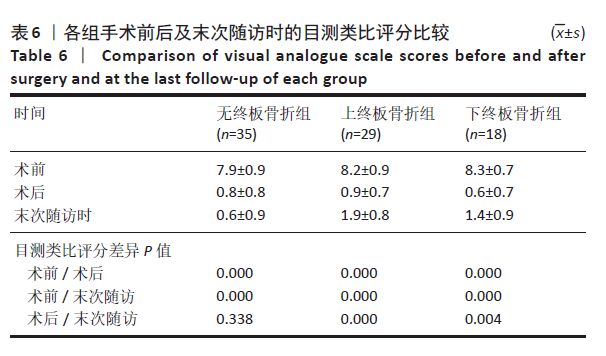[1] 李康,王诗尧,许少策,等. 中国人群PVP术后非手术椎体骨折的危险因素[J]. 中国脊柱脊髓杂志,2018,28(9):801-810.
[2] MEUNIER PJ, DELMAS PD, EASTELL R, et al. Diagnosis and management of osteoporosis in postmenopausal women: clinical guidelines. International Committee for Osteoporosis Clinical Guidelines. Clin Ther. 1999;21(6):1025-1044.
[3] ORTIZ AO, BORDIA R. Injury to the vertebral endplate-disk complex associated with osteoporotic vertebral compression fractures. AJNR Am J Neuroradiol. 2011;32(1):115-120.
[4] TROUT AT, KALLMES DF, LAYTON KF, et al. Vertebral endplate fractures: an indicator of the abnormal forces generated in the spine after vertebroplasty. J Bone Miner Res. 2006;21(11):1797-1802.
[5] APARISI F. Vertebroplasty and Kyphoplasty in Vertebral Osteoporotic Fractures. Semin Musculoskelet Radiol. 2016;20(4):382-391.
[6] BLACK DM, ARDEN NK, PALERMO L, et al. Prevalent vertebral deformities predict hip fractures and new vertebral deformities but not wrist fractures. Study of Osteoporotic Fractures Research Group. J Bone Miner Res. 1999;14(5):821-828.
[7] 单建林, 张阳, 单忠林, 等. 胸腰段椎体压缩性骨折中下腰痛症状观察及机制分析[J]. 脊柱外科杂志,2015,13(1):33-36.
[8] LI X, LOU X, LIN X, et al. Refracture of osteoporotic vertebral body concurrent with cement fragmentation at the previously treated vertebral level after balloon kyphoplasty: a case report. Osteoporos Int. 2014;25(5):1647-1650.
[9] HOLLOWELL JP, VOLLMER DG, WILSON CR, et al. Biomechanical analysis of thoracolumbar interbody constructs. How important is the endplate. Spine (Phila Pa 1976). 1996;21(9):1032-1036.
[10] ADAMS MA, FREEMAN BJ, MORRISON HP, et al. Mechanical initiation of intervertebral disc degeneration. Spine (Phila Pa 1976). 2000;25(13): 1625-1636.
[11] DELUCCA JF, PELOQUIN JM, SMITH LJ, et al. MRI quantification of human spine cartilage endplate geometry: Comparison with age, degeneration, level, and disc geometry. J Orthop Res. 2016;34(8):1410-1417.
[12] ONER FC, VAN GILS AP, FABER JA, et al. Some complications of common treatment schemes of thoracolumbar spine fractures can be predicted with magnetic resonance imaging: prospective study of 53 patients with 71 fractures. Spine (Phila Pa 1976). 2002;27(6):629-636.
[13] WEISSKOPF M, OHNSORGE JA, NIETHARD FU. Intravertebral pressure during vertebroplasty and balloon kyphoplasty: an in vitro study. Spine (Phila Pa 1976). 2008;33(2):178-182.
[14] 向珊珊,陈忠羡,雷洪俊,等. 经皮椎体成形术后骨水泥椎间隙渗漏的临床疗效观察[J]. 中国医药科学,2019,9(8):208-212.
[15] 俞海明,李毅中,姚学东,等. 迟发性骨质疏松性椎体塌陷的手术方式选择[J]. 中国骨伤,2016,29(7):606-613.
[16] 刘长枫,宋文慧,刘昌文,等. 经皮椎体成形术骨水泥分布评价及影响因素分析[J]. 中国脊柱脊髓杂志,2019,29(11):1001-1008.
[17] 吴贵根,唐中尧,杨陈一,等. 骨质疏松性椎体压缩性骨折行PVP与PKP术后伤椎再塌陷的临床对比分析[J]. 颈腰痛杂志,2017,38(5): 412-416.
[18] 郑川玉,戴杰,李振环,等. 骨质疏松性胸腰椎压缩骨折经皮骨水泥椎体强化治疗椎体再塌陷情况及相关因素分析[J]. 颈腰痛杂志, 2019,40(3):394-396.
[19] HEO DH, CHIN DK, YOON YS, et al. Recollapse of previous vertebral compression fracture after percutaneous vertebroplasty. Osteoporos Int. 2009;20(3):473-480.
[20] KIM MJ, LINDSEY DP, HANNIBAL M, et al. Vertebroplasty versus kyphoplasty: biomechanical behavior under repetitive loading conditions. Spine (Phila Pa 1976). 2006;31(18):2079-2084.
[21] QUAN R, NI Y, ZHANG L, et al. Short- and long-term effects of vertebroplastic bone cement on cancellous bone. J Mech Behav Biomed Mater. 2014;35:102-110.
[22] TURNER TM, URBAN RM, SINGH K, et al. Vertebroplasty comparing injectable calcium phosphate cement compared with polymethylmethacrylate in a unique canine vertebral body large defect model. Spine J. 2008;8(3):482-487.
[23] AGHYARIAN S, HU X, LIEBERMAN IH, et al. Two novel high performing composite PMMA-CaP cements for vertebroplasty: An ex vivo animal study. J Mech Behav Biomed Mater. 2015;50:290-298.
[24] ROHLMANN A, ZANDER T, BERGMANN G. Spinal loads after osteoporotic vertebral fractures treated by vertebroplasty or kyphoplasty. Eur Spine J. 2006;15(8):1255-1264.
[25] HONG SJ, LEE S, YOON JS, et al. Analysis of intradiscal cement leakage during percutaneous vertebroplasty: multivariate study of risk factors emphasizing preoperative MR findings. J Neuroradiol. 2014;41(3):195-201. |
